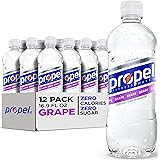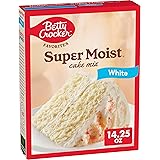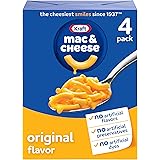The traditional Mexican beverage known as Tepache offers a fascinating entry point into the world of natural fermentation. This effervescent pineapple drink has roots extending back to pre-Columbian Mexico. Historically, it was produced from ground maize, evolving over time to incorporate pineapple. Today, Tepache is a beloved refreshing drink, celebrated for its unique tangy-sweet flavor profile and subtle carbonation. The process, while simple in concept, demands patience and precision for optimal results. As demonstrated in the accompanying video, creating Tepache requires thoughtful ingredient preparation and careful management of microbial activity.
The Art of Crafting Tepache: Ingredient Selection
Successful Tepache production begins with judicious ingredient sourcing. Each component plays a critical role in the final flavor and fermentation kinetics. The foundation of authentic Tepache relies on unrefined sugars and fresh fruit. These elements provide the necessary substrate for microbial action.
Panela: The Sweet Foundation
Panela, or piloncillo, is the traditional sweetener for Tepache. This unrefined whole cane sugar block contributes more than just sweetness. Its molasses-rich profile adds depth and complexity to the final beverage. Furthermore, Panela contains vital trace minerals and micronutrients. These elements are beneficial to the yeast and bacteria responsible for fermentation. In the video, Panela is dissolved in hot water. This step ensures proper sugar distribution throughout the fermentation vessel. While other sugars like brown sugar can be used, Panela’s unique character is truly irreplaceable. Its density requires thorough dissolution for uniform microbial access.
Pineapple: The Microbial Inoculum
The star of Tepache is the pineapple. Crucially, the peels and core are used, not just the flesh. These parts harbor a rich community of wild yeasts and bacteria. Specifically, the outer skin provides a natural microbial inoculum. These microorganisms initiate the fermentation process. It is imperative that the pineapple skin is cleaned thoroughly. Contaminants from the grocery store environment must be removed. Proper washing minimizes the introduction of undesirable microbes. The core also contributes flavor compounds and structural integrity. Both components are essential for a robust ferment.
Aromatic Enhancers: Ginger, Cinnamon, and Chili
Beyond the core pineapple and Panela, aromatics elevate Tepache’s complexity. The video highlights three specific additions: ginger, cinnamon, and an optional chili pepper. Three slices of ginger introduce a pungent, warming note. One stick of cinnamon provides a sweet, woody fragrance. The chili pepper, if included, adds a subtle piquant kick. These ingredients are not merely flavorings. They also possess antimicrobial properties. These properties can influence the microbial ecosystem in the ferment. Experimentation with quantities is encouraged for personalized flavor profiles.
Mastering the Fermentation Process for Tepache
The transformation of simple ingredients into a complex beverage is truly fascinating. Fermentation is a biological process driven by microorganisms. These microbes convert sugars into alcohol, carbon dioxide, and various organic acids. This process yields Tepache’s signature fizziness and tangy taste.
Submergence: Ensuring Anaerobic Conditions
Once all ingredients are combined, they must be fully submerged. The video demonstrates the use of glass weights for this purpose. Complete submergence is critical for several reasons. It helps to create an anaerobic, or oxygen-free, environment. Many beneficial yeasts and bacteria thrive in such conditions. Furthermore, it prevents the growth of undesirable molds. Molds are aerobic organisms that require oxygen to proliferate. Floating fruit or peels are highly susceptible to spoilage. Maintaining an oxygen barrier is a primary defense against contamination.
The 100-Hour Fermentation Window
The video specifies a 100-hour fermentation period at room temperature. This timeframe is crucial for optimal flavor development and carbonation. During this period, wild yeasts, predominantly from the pineapple skin, convert sugars. Glucose and fructose are transformed into ethanol and carbon dioxide. Lactic acid bacteria (LAB) may also contribute to a slight acidification. The ambient room temperature directly influences the rate of microbial activity. Warmer temperatures accelerate fermentation, while cooler conditions slow it down. A consistent temperature, ideally between 68-75°F (20-24°C), yields reliable results. Exceeding this range can lead to off-flavors or spoilage. Conversely, too cold a temperature can stall fermentation altogether.
Daily Maintenance: Preventing Spoilage and Pressure Buildup
Two critical maintenance tasks are essential during the 100-hour fermentation. Firstly, the ferment must be gently agitated daily. This ensures all solids remain submerged and prevents localized mold growth. Any exposed material risks contamination. Secondly, the container requires occasional “burping.” This involves briefly opening the lid to release built-up carbon dioxide gas. Fermentation naturally produces CO2. Without release, pressure can accumulate to dangerous levels. A sealed container could potentially rupture. Regular burping is a simple, effective safety measure. It also allows for observation of fermentation progress, as indicated by bubbling activity.
Post-Fermentation: Refining Your Tepache
After the designated 100 hours, the raw ferment requires processing. This step separates the liquid from the solids. It prepares the Tepache for consumption or further conditioning. Precision during straining ensures a clean, appealing final product.
Straining for Clarity and Purity
The fermented liquid is carefully separated from the pineapple peels, core, and spices. The video recommends using cheesecloth for this purpose. Cheesecloth effectively filters out particulate matter. This results in a clearer, more palatable beverage. Multiple layers of cheesecloth can be used for finer filtration. Alternatively, a fine-mesh sieve can be employed. This step removes the spent fruit solids. These solids have already contributed their microbial load and flavors. Leaving them in the liquid past the initial fermentation can lead to over-fermentation or off-flavors.
Flavor Adjustment and Secondary Fermentation
Upon straining, the Tepache is ready for tasting. At this stage, sweetness levels can be adjusted to preference. More Panela or another sweetener may be added if desired. However, adding more sugar will likely initiate a secondary fermentation. This can increase carbonation and potentially alcohol content. The Tepache can be consumed immediately. However, many prefer a brief period of secondary fermentation in a sealed bottle. This process builds additional carbonation. The residual yeast consumes the remaining sugars. This creates a delightful fizz. Refrigeration then slows down microbial activity. This helps stabilize the flavor and carbonation. This ensures a consistent and enjoyable drinking experience.










